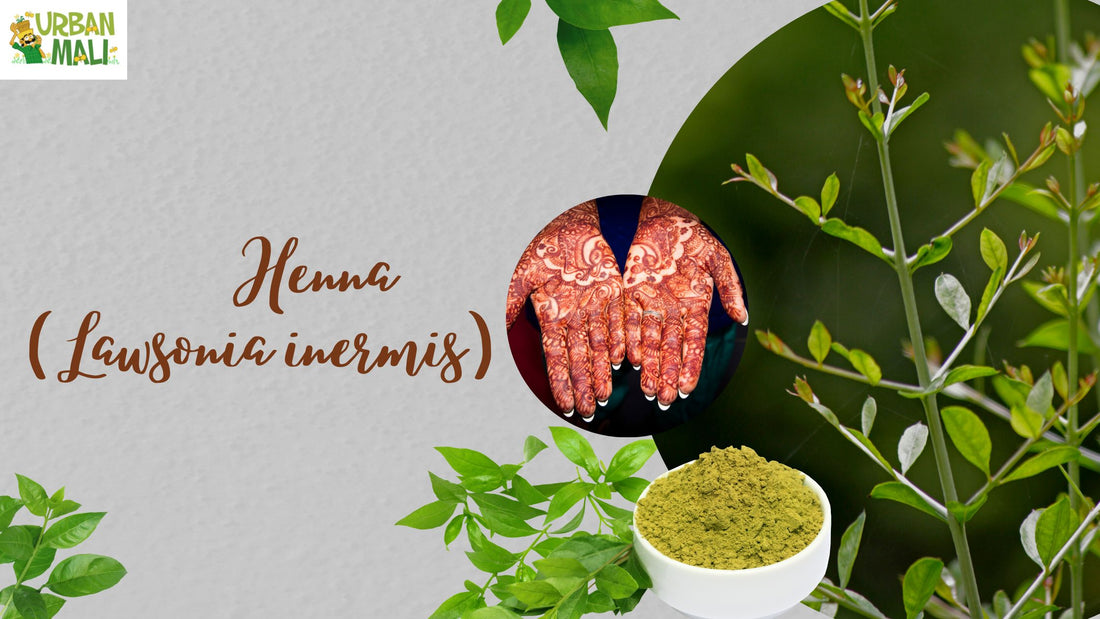Henna has become very popular over the years. People love using henna tattoos because they look beautiful. There are several types of henna out there, but the most common ones include Lawsonia alba, L. inermis, and L. aculeata. It is also called the Mehendi plant.
Henna comes from the plant Lawsonia inermis. It belongs to the family Lythraceae. This plant is native to India and Pakistan. The leaves of this plant contain a natural dye called anthraquinone.
The name "henna" derives from Ancient Greek ἔννα (hénna), meaning "dye", referring to the yellow color of the dried leaves.
Henna is an ancient plant that has been used for centuries to color hair and skin. It is also grown as a decorative plant.
Henna is an attractive and easily-grown ornamental plant. It grows quickly and needs little maintenance once established.

Medicinal uses of Henna
- Henna is used in traditional medicines for curing wounds and burns.
- The active ingredient of henna is Linalool, a volatile oil found in many plants. It is one of the most widely used essential oils in aromatherapy.
- It helps relieve stress, anxiety, depression, insomnia, headaches, migraines and muscle pain. It is also used in perfumes.
- In Ayurveda, Henna is considered to be a rejuvenating tonic for the body.
- It is believed to strengthen hair roots, improve circulation, promote healing of cuts and abrasions, reduce inflammation and prevent infections.
- Henna is traditionally used to heal burns, wounds, and skin problems.
- It is used internally to cure a wide range of diseases such as fever, stomach disorders, heart ailments, and urinary tract infections, among others.

Other uses of Henna
- It is cultivated for use in traditional medicine, cosmetic products such as hair dye, and food coloring.
- In ancient times, henna was widely used as a dyeing agent. Its use spread throughout Africa, Asia, and Europe. Today, it is primarily used as a body art product, especially among women in Middle Eastern countries.
- Henna is traditionally used to decorate the body with intricate patterns. This includes the hands and feet of women preparing for marriage ceremonies, as well as the hands of brides and grooms during weddings. Traditionally, it is applied to the bride’s palms and soles of her feet in a paste form.
- These days, it is often used to add highlights to the hair.
- In India, henna is commonly used to color the hair. It is mixed with chamomile flowers and applied to the hair, usually mixed into a paste. Sometimes, henna is used as a conditioner and coloring agent.
Here are some tips on growing Lawsonia inermis plant indoors
1. Choose a Good Location
Henna needs sunlight but does not like direct sun. So, choose a location near a window that gets indirect light. Also, make sure the room doesn't get too hot during summer months.
2. Prepare the Room Properly
You'll need to provide your Mehendi plant with a place to root. To do so, fill a pot with soil and set it in a sunny spot. Add water until the soil is moistened.
3. Water Regularly
Watering regularly is essential for keeping Mehendi alive. When watering, avoid overwatering. Let the soil dry out between waterings.
4. Feed Regularly
Feed your Mehendi plants every week or two with a fertilizer specifically formulated for houseplants.
5. Provide Light
Light is another key ingredient for growing Henna. Place your plants in a bright area.
6. Repot Every Two Years
Repotting is necessary when your Mehendi is getting too large. Remove the roots and repot in fresh soil.
7. Prune Back Leaves
Leaves tend to grow quickly and become unruly. Cut back the leaves to encourage growth.

Next step
Gardener services
Landscaping services
Online nursery
Organic pesticides and fertilizers
Extra reading
Dodda Davana (Artemisia nilagirica)
Manoranjitha (Artabotrys odoratissimus)
Nela bevu (Andrographis paniculata)
Nithya pushpa (Catharanthus roseus)
Happy Gardening!
Dr. Vandana K.

